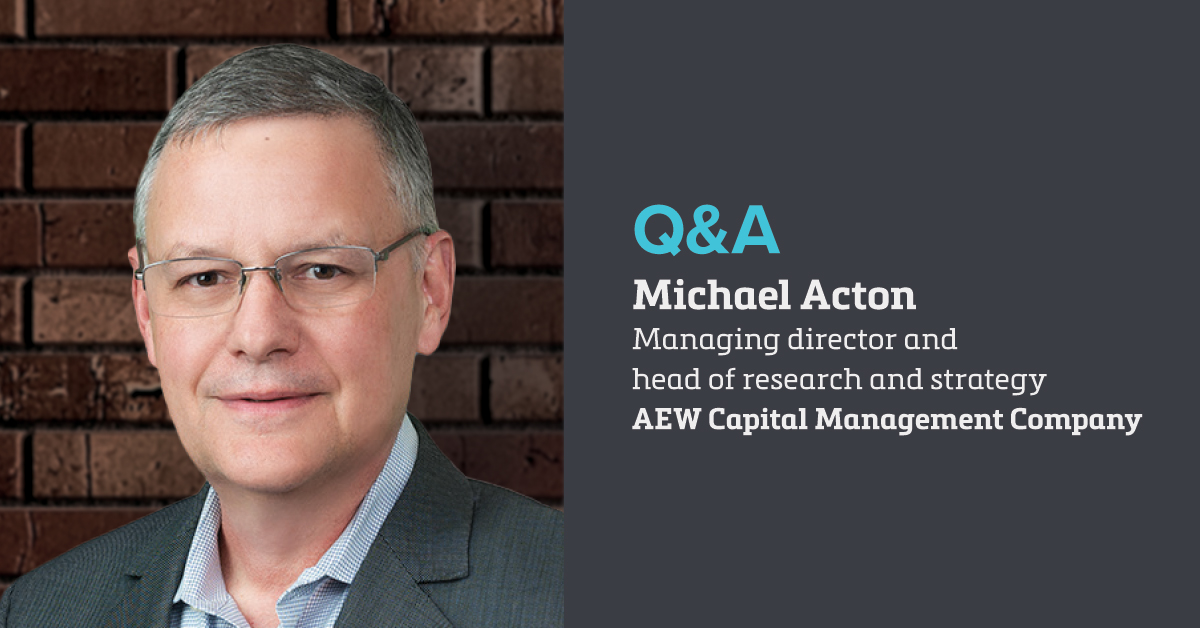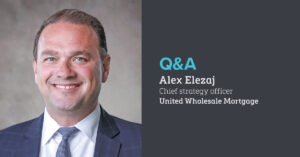Despite the glacial pace of the commercial real estate markets in early 2024, the U.S. economy has shown unexpected strength last year and early in 2024, said Michael Acton of real estate investment services company AEW. The company’s head of research and strategy in North America, Acton sees potential in various commercial categories, including senior housing, but doesn’t expect office vacancies to peak until 2025. Acton spoke with Scotsman Guide about the economy and the state of commercial real estate.
You wrote recently that the U.S. economy continues to surprise to the upside. What has been the biggest surprise for you?
The biggest surprise is that the labor market has stayed so resilient in the face of a pretty abrupt tightening cycle by the Federal Reserve. History would say that when the Fed moves interest rates higher as much and as fast as they did, there should already be an observable reaction to that. Here we are with pretty low unemployment, strong job gains and very little in initial claims. There are signals that the economy is slowing, but I’m still surprised at its strength. We have had an inverted yield curve for more than a year and a half now. History says when you get an inverted yield curve for that long, there’s trouble ahead, and yet it hasn’t shown up yet.
Where do you stand on whether we will have a recession this year?
Everything I’ve learned about business cycles was telling me last year that there should be a recession. I’m sort of loathe to give up on that because it hasn’t happened yet. I’m not a formally trained economist, and there are a lot of more qualified macro-economists who can speak to this. But having said that, I’ve been in this business for more than 30 years and indicators that I’ve thought historically were good predictors, such as the inverted yield curve, of the end of a business cycle has been saying recession consistently for more than a year and a half now. So, if a recession doesn’t happen, we will really have to rethink the value of a lot of these indicators.
What do you expect for commercial real estate for the rest of this year?
We have data for the first two months of this year, and those numbers are coming in at about half the pace of last year, which was the slowest year in a decade. I guess that’s not a big surprise. If you look back toward the end of last year, a lot of participants in a lot of asset markets were just assuming that the Fed would move relatively quickly on cutting rates. But that hasn’t happened. So that has probably caused a lot of people to wait for a better day to trade. I think that this will be another slow year for transactions, at least in the first half. This is an industry where hope springs eternal, and everyone seems to be saying the market will pick up in the second half of the year.
Where do you stand on the dangers of the so-called “wall of maturities” that are hitting commercial properties?
There is a lot of pressure in the system, particularly for smaller banks. The Mortgage Bankers Association (MBA) reported that somewhere in the order of $900 billion in commercial mortgages will mature and will need to be refinanced this year. A large chunk of those are office loans. If you look at the composition of the commercial mortgage market, you’ll see that banks have accounted for about half of all the outstanding commercial mortgages since 1990 or even earlier. But there has been a pretty dramatic change in the last 15 years or so where the larger banks have been reducing their share of commercial mortgages. The smaller and regional banks have been increasing their share of the business. This was really a direct reflection of the regulatory environment that came into being after the financial crisis beginning in 2008.
With the higher interest rates, and banks acting more conservatively, there is going to be a funding gap between what the banks can offer and what the borrowers will need and it’s pretty big. We estimate that if the MBA’s expectations are correct, there is a gap of about $500 billion of capital for refinancing these loans over the next three years or so. It is not an insurmountable number, but it’s a big number. There is going to need to be a lot of creative solutions and a lot of opportunities for so-called “rescue capital” that could be new equity coming into the market. I think in the near-term smaller banks are going to be under pressure to shrink their real estate footprint. So, the smaller banks won’t be moving aggressively into commercial property for quite some time.






